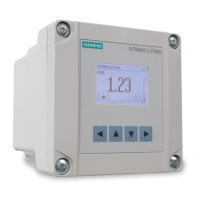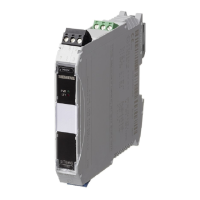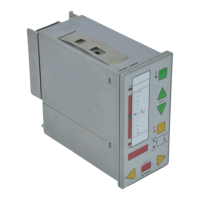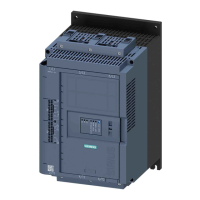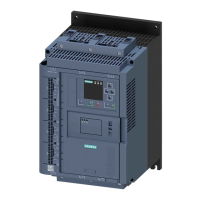SITRANS LUT400
Operating Instructions, 07/2019, A5E33329501-AC
235
Hump height p - OCM Dimension 3 (2.15.4.7.)
Throat length L - OCM Dimension 4 (2.15.4.8.)
Approach diameter Da - OCM Dimension 1 (2.15.4.5.)
Throat diameter D - OCM Dimension 2 (2.15.4.6.)
Hump height p - OCM Dimension 3 (2.15.4.7.)
Throat length L - OCM Dimension 4 (2.15.4.8.)
Finite Crest Weir BS-3680
Crest width b - OCM Dimension 1 (2.15.4.5.)
Crest height p - OCM Dimension 2 (2.15.4.6.)
Crest length L - OCM Dimension 3 (2.15.4.7.)
Thin Plate Rectangular Weir BS-3680
Approach width b - OCM Dimension 1 (2.15.4.5.)
Crest width b - OCM Dimension 2 (2.15.4.6.)
Crest height p - OCM Dimension 3 (2.15.4.7.)
Thin plate V-notch weir BS-3680
V-notch angle (2.15.4.2.)
Rectangular Weir Contracted
Crest width b - OCM Dimension 1 (2.15.4.5.)
Pipe inside diameter D - OCM Dimension 1 (2.15.4.5.)
Roughness coefficient (2.15.4.4.)
Maximum flume width hmax - OCM Dimension 1 (2.15.4.5.)
Maximum listed head hmax - OCM Dimension 1 (2.15.4.5.)
Head 1 (up to 32) (2.15.5.1.1.)
Flow 1 (up to 32) (2.15.5.1.2.)
K Factor (2.15.4.1.)
The constant used in the flow calculation formula for absolute calculation of an exponential
device only.
Range: -999.000 to 9999.000
Use this parameter if the PMD is set to Exponential devices. The Constant Factor is used to
create an exponential curve with end points set by
Maximum Head (2.15.3.3.) (Page 232)
and Zero Head Offset (2.15.3.5.) (Page 233) , and with the curve based on the specified
exponent.
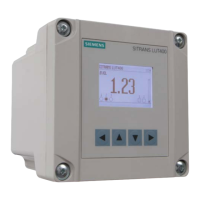
